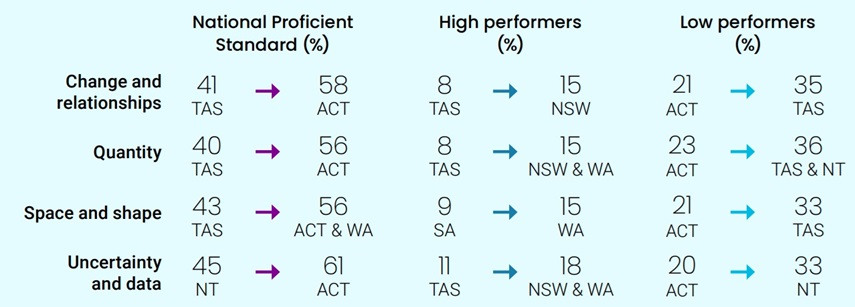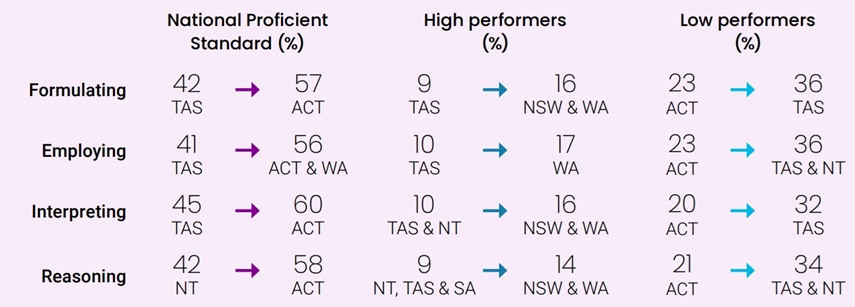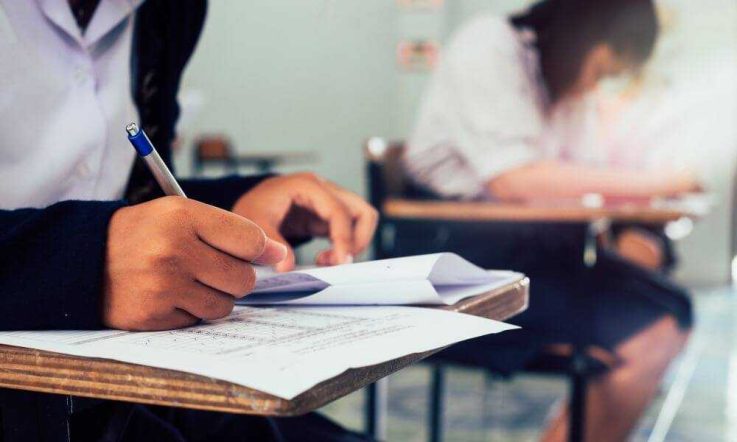A new report from the Australian Council for Educational Research (ACER) reveals valuable insights for teachers about where 15-year-old students’ strengths lie in mathematics, and the areas where they are likely to need more support.
PISA 2022: A closer look at mathematics in Australia (De Bortoli & Underwood, 2025) looks at the performance of more than 13,400 students who took part in the latest OECD Programme for International Student Assessment (PISA). Analysis includes state and territory breakdowns, and how Australian students fared in an international context.
‘PISA looks at the core areas of maths that are fundamental to solving the mathematical challenges students are likely to face in their adult and professional lives,’ report co-author Lisa De Bortoli explains.
‘This deep analysis gives us timely insight into what Australian teenagers who are close to taking that next step into further education or work can do in maths, and the specific areas where they excel or are likely to need more help.’
The ACER report, released today, also shares findings from the student and teacher PISA questionnaire.
Students’ strengths in mathematics
PISA follows a 3-year assessment cycle and measures 15-year-old students’ knowledge and skills in mathematics, science and reading. Each assessment cycle has a major focus on one of these domains; the latest (2022) cycle focused on mathematics.
There were 2 mathematics subscales within PISA 2022: content and process.
The content subscales represent core areas of mathematics knowledge featured in worldwide curricula, and mathematics problems students are likely to encounter in real-world contexts. The content subscales are:
- Change and relationships
- Quantity
- Space and shape
- Uncertainty and data
Process subscales reflect the mental actions required for effective problem-solving in mathematics. The process subscales are:
- Formulating situations mathematically
- Employing mathematical concepts, facts and procedures
- Interpreting, applying and evaluating mathematical outcomes
- Mathematical reasoning
Overall, Australia performed above the OECD average in all content and process subscales for mathematics, and the analysis highlights some particular strengths.
In the content subscale, students showed the greatest strength in uncertainty and data, which measures the ability of students to understand and interpret statistical information and probability. In this area, Australia performed below only 9 countries – Singapore, Macao (China), Chinese Taipei, Hong Kong (China), Japan, Korea, Estonia, Switzerland and Canada. Australian students performed at the same level as 6 countries – Denmark, Ireland, United Kingdom, Netherlands, Belgium and Poland.
For the process subscale, Australian students showed the greatest strength in interpreting, applying and evaluating mathematical outcomes. This subscale refers to students being able to reflect upon mathematical solutions, results or conclusions and interpret them in the context of the real-life problem that initiated the process. Australia’s performance in this area in relation to other countries mirrors the results for uncertainty and data (see above).
Performance by gender, background and location
In Australia, the key performance measure in PISA has been set at the boundary between Level 2 and Level 3 on the PISA proficiency scales (as agreed in the Measurement framework for schooling in Australia). This level represents ‘a “challenging but reasonable” expectation of student achievement at a year level with students needing to demonstrate more than elementary skills expected at that year level’ (ACARA, 2020, p. 6). As PISA is an age-based sample, the National Proficient Standard refers to 15-year-olds rather than a year level.
Taking a closer look at Australia’s results in a national context, analysis revealed that across all mathematics subscales, male students outperformed female students, except in the interpreting, applying and evaluating mathematical outcomes process subscale where there was no gender difference. There were also more male than female high performers overall.
For all subscales, students in schools in major cities outperformed students in regional and remote schools, and students in regional schools outperformed students in remote schools. The data also show students from higher socioeconomic backgrounds outperformed students from lower socioeconomic backgrounds, across all subscales.
For all subscales, First Nations students performed lower than non-First Nations students; foreign-born and first-generation students performed similarly but outperformed Australian-born students; and students who spoke English at home performed at a similar level to students who spoke a language other than English at home.
Across the country’s state and territories, results vary. Table 1 shows the ranges of proportions for students who attained the National Proficient Standard, and who were high and low performers in each of the content subscales.

Table 2 shows the ranges of proportions for student who attained the National Proficient Standard, and who were high and low performers in each of the process subscales.

Australian student perspectives on mathematics
A student questionnaire formed a part of PISA 2022 and gathered student perspectives about the constructs of:
- Effort and persistence in mathematics
- Mathematics self-efficacy in mathematical reasoning and 21st-century mathematics topics
- Mathematics anxiety
ACER analysis of these student responses found that Australia was significantly higher than the OECD average in the first 2 constructs. For mathematics anxiety, Australia was not significantly different to the OECD average.
Some interesting differences for gender, background and location were also observed for Australian students. For instance, more male than female students reported higher self-efficacy in mathematical reasoning and 21st-century mathematics, and more female students than male students reported greater effort and persistence in mathematics lessons, and higher levels of mathematics anxiety.
Mathematics anxiety was also found to be higher for students from disadvantaged socioeconomic backgrounds than advantaged backgrounds, and for students in remote schools than students at schools in major cities or regional areas.
More students in major cities than in regional or remote schools reported greater effort and persistence in their maths lessons. The same was the case for self-efficacy in mathematical reasoning and 21st-century mathematics. More non-First Nations than First Nations students reported greater effort and persistence in mathematics lessons and self-efficacy in mathematical reasoning and 21st-century mathematics.
Australian teacher perspectives on mathematics
A teacher questionnaire is also a key part of PISA 2022. Teachers were asked to rate their agreement with statements about ‘their views and goals when teaching mathematics’ according to a 4-point scale. They were asked to rate how often they showed a range of behaviours indicative of encouraging mathematical thinking and fostering mathematical reasoning. They were additionally asked to rate how often they had taught a range of different mathematics topics during the school year to measure their teaching of mathematical reasoning and 21st-century mathematics topics.
Australian teachers generally reported higher goals and views about teaching mathematics than the OECD average.
‘More female than male teachers reported: a larger amount of goals and views about teaching mathematics; a greater range of behaviours encouraging mathematical thinking; more behaviours fostering mathematics reasoning,’ the ACER report notes.
‘More teachers at schools in remote areas than teachers at schools in major cities and in regional areas had higher goals and views about teaching mathematics. More teachers at schools in major cities than teachers in regional areas showed more behaviours fostering mathematical reasoning. More teachers at schools in major cities than teachers in regional areas, and more so than teachers in remote areas reported teaching mathematical reasoning and 21st-century mathematics topics more frequently.’
The 220-page report digs into the data in detail, giving information on Australia’s results in relation to the mathematics content and process subscales (including in an international context), and questionnaire responses (including teacher behaviours that encourage mathematical thinking and foster reasoning, and student self-efficacy, persistence and anxiety in mathematics). Download a copy here.
ACER conducted PISA 2022 in Australia on behalf of and with funding from the Australian and state and territory governments.
Stay tuned: Teacher will continue to unpack the PISA 2022 results, and implications for classroom teachers and school leaders, in future content. Subscribe to our free weekly email bulletin here, so you never miss a story.
References
Australian Curriculum, Assessment and Reporting Authority. (2020). Measurement framework for schooling in Australia. Education Council and ACARA. https://acara.edu.au/reporting/measurement-framework-for-schooling-in-australia
De Bortoli, L., & Underwood, C. (2025). PISA 2022. A closer look at mathematics in Australia. Australian Council for Educational Research. https://doi.org/10.37517/978-1-74286-786-1.



